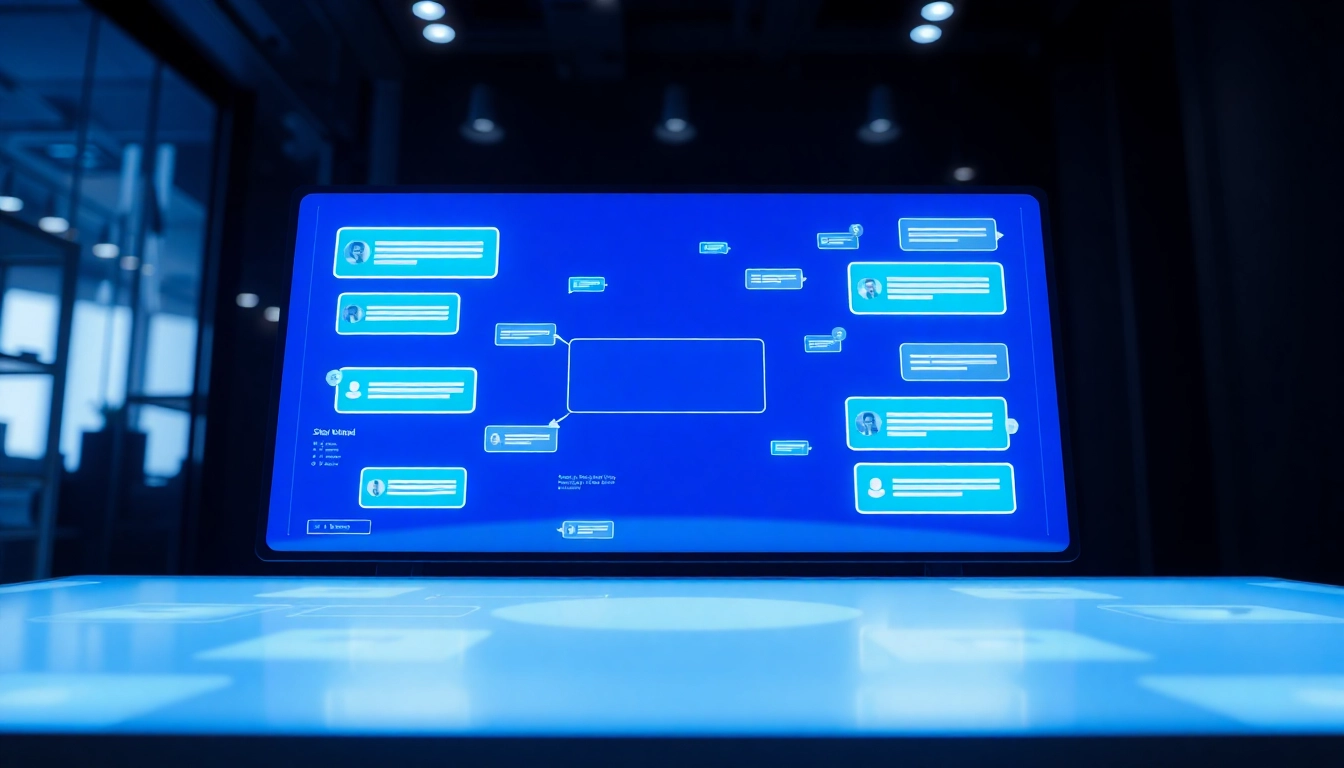Understanding AI Automation and Its Business Benefits
In today’s rapidly evolving digital landscape, businesses continually seek methods to enhance efficiency, reduce manual effort, and accelerate growth. Among these methods, AI Automation has emerged as a transformative force, leveraging cutting-edge technologies like machine learning, natural language processing, and intelligent algorithms to streamline operations and empower teams. By integrating AI automation into their workflows, organizations can minimize human errors, optimize resource allocation, and unlock new levels of productivity that drive competitive advantage.
What is AI Automation and How Does It Work?
AI automation refers to the use of artificial intelligence technologies to perform routine, repetitive, or rule-based tasks that traditionally required human intervention. Unlike conventional automation, which executes predefined sequences of actions, AI automation adapts and improves over time, handling complex problems and making decisions with minimal oversight. Essentially, AI-powered systems can analyze data, recognize patterns, and respond contextually—mimicking human intelligence but at a much faster rate and on a larger scale.
This capability allows businesses to automate processes such as customer interactions, data entry, scheduling, report generation, and more. For instance, chatbots equipped with natural language processing can handle customer inquiries around the clock, freeing up human agents for more strategic tasks.
Core Technologies Behind AI Automation
The foundation of effective AI automation is built on several key technologies:
- Machine Learning (ML): Enables systems to learn from data patterns and improve their performance without explicit programming.
- Natural Language Processing (NLP): Allows machines to understand, interpret, and generate human language, essential for chatbots, document analysis, and voice assistants.
- Robotic Process Automation (RPA): Automates rule-based tasks with software bots, which can be enhanced with AI to handle more complex scenarios.
- Computer Vision: Empowers automation systems to interpret visual data, facilitating processes like image analysis and quality control.
- Deep Learning: Provides advanced pattern recognition capabilities, enabling AI to manage unstructured data such as images and audio.
The integration of these technologies results in smart automation solutions capable of mimicking human reasoning, adapting to changing conditions, and making autonomous decisions—key drivers of a new era of operational excellence.
Key Advantages for Your Business
Implementing AI automation offers numerous strategic benefits:
- Increased Efficiency: Automations reduce cycle times and enable round-the-clock operations, vastly increasing throughput and responsiveness.
- Cost Reduction: By automating manual tasks, organizations save on labor costs and minimize costly errors.
- Enhanced Customer Experience: Faster response times and personalized interactions elevate customer satisfaction and loyalty.
- Data-Driven Insights: AI systems collect and analyze data continuously, providing actionable insights and supporting informed decision-making.
- Scalability: Automations grow with your business, handling increased volume without proportional increases in resources.
- Innovation Enablement: Freeing human capital from routine tasks allows teams to focus on strategic initiatives, innovation, and growth.
Practical Steps to Integrate AI Automation into Your Business
Identifying Repetitive Tasks Suitable for Automation
Successful AI automation begins with a thorough assessment of current workflows. Entrepreneurs should map out routine activities—such as appointment scheduling, lead data entry, email follow-ups, and content publishing—that consume significant time and resources but add limited strategic value. These tasks are prime candidates for automation due to their repetitive nature and high volume.
FlowBuildr emphasizes a pragmatic approach: starting small, testing initial automations, and refining processes based on feedback. By focusing on high-impact workflows, businesses can quickly realize efficiency gains and build momentum for broader automation adoption.
Selecting the Right AI Tools and Platforms
The selection of AI tools is crucial to achieving desired outcomes. Factors to consider include compatibility with existing systems, ease of use, scalability, and support for custom workflows. For example, solutions like HubSpot, Make, n8n, or Zapier enable seamless integration with popular business apps, ensuring automation processes can be deployed rapidly and maintained easily.
FlowBuildr recommends a flexible, tool-agnostic approach, tailoring automation platforms to your unique business needs. When choosing AI agents or platforms, consider their ability to handle the volume of data, complexity of tasks, and future expansion plans. The goal is to build robust, scalable systems that adapt as your business grows.
Implementing and Monitoring AI Workflows Effectively
Implementation involves designing process flows that closely mirror your operational steps, then translating them into automated sequences. It’s advisable to work with experienced automation specialists who can help customize workflows, ensure data security, and troubleshoot potential issues.
Once deployed, continuous monitoring is vital. Use dashboards and analytics to track key performance indicators such as processing times, error rates, and customer satisfaction levels. Regular reviews enable ongoing improvements, ensuring the automation system remains aligned with business objectives and adapts to changing requirements.
Best Practices for Successful AI Automation Deployment
Customizing Automation to Fit Your Client Journey
Effective automation aligns with your customer lifecycle. For example, automating appointment booking and follow-up emails enhances client engagement from the first contact to post-service reviews. Personalization tools, driven by AI, can tailor messages based on customer data, increasing conversion rates and satisfaction.
FlowBuildr demonstrates this approach by designing workflows that adapt to each customer’s behavior and preferences, ensuring seamless interactions at every touchpoint.
Overcoming Common Challenges and Pitfalls
Integrating AI automation is not without hurdles. Challenges include data silos, resistance to change, integration complexity, and maintaining flexibility. Strategies to overcome these include:
- Ensuring data hygiene and centralized access for consistent automation logic.
- Communicating benefits clearly to team members to foster buy-in.
- Choosing scalable, API-first solutions that can evolve with your business needs.
- Starting with pilot projects to demonstrate ROI and refine processes before full deployment.
By proactively addressing these issues, organizations can mitigate risks and accelerate successful adoption.
Measuring and Enhancing Automation Performance
Key performance metrics include time savings, error reduction, customer satisfaction, and ROI. Regularly reviewing these indicators informs necessary adjustments. For example, automations that lead to frequent exceptions may require fine-tuning or additional human oversight initially.
FlowBuildr emphasizes built-in reporting and analytics, providing clients with visual dashboards that make performance transparent and actionable.
Case Studies and Real-World Examples
Small Business Success Stories with AI Automation
Consider a local marketing agency that integrated AI-powered scheduling and automated content publishing. By automating routine tasks, they reduced operational time by 70%, enabling staff to focus on creative strategy, leading to increased client retention and new business acquisition. Similar businesses have reported faster response times and higher client satisfaction scores.
Industry-Specific Applications
Manufacturing firms apply AI automation for predictive maintenance, reducing downtime and extending equipment lifespan. Retailers leverage AI chatbots for personalized customer service, leading to higher conversion rates. Professional services automate client onboarding and invoicing processes, dramatically increasing operational efficiency.
Lessons Learned and Future Outlook
Key takeaways include the importance of starting small, prioritizing high-impact workflows, and investing in staff training. As AI technologies continue to evolve, future automation solutions will become more sophisticated, enabling even deeper integration across business functions and real-time adaptive processes. Staying ahead requires continuous learning and agile implementation strategies.
Scaling and Future-Proofing Your AI Automation System
Building Flexible and Scalable Flows
Scalability is fundamental for sustained growth. Designing flows with modular components, standardized templates, and flexible configurations ensures automation systems can handle increasing customer volumes—from 10 to 1,000+ clients seamlessly.
FlowBuildr advocates for automation that adapts effortlessly, with flows that expand horizontally for new processes or vertically for growing data complexity.
Integrating AI Automation with Existing Systems
Integration is critical to maximize existing investments. APIs, webhooks, and middleware solutions like Make or n8n facilitate connections among diverse platforms such as WordPress, HubSpot, Google Workspace, and Slack. This creates a unified, intelligent infrastructure that operates cohesively.
Proper integration reduces data duplication, minimizes errors, and ensures a smooth flow of information across tools, leading to enhanced decision-making and operational transparency.
Preparing for Advances in AI and Automation Technologies
Future-proofing involves continuous monitoring of emerging trends like generative AI, edge computing, and autonomous decision systems. Building adaptable architectures, maintaining scalable infrastructure, and fostering a culture of innovation enable businesses to leverage new capabilities as they mature.
Staying informed through tech insights and industry updates empowers organizations to adopt next-generation automation solutions proactively.



